Contents


Preface The history of animal-themed paintings in China can be traced back to the Neolithic Age around 6,000 or 7,000 years ago when our ancestors used the imagery of fish, bird and frog, which were closely related to their daily life, as decorative patterns on earthenware. In the periods of Shang (c. 1600-1100 BC) and Zhou (c. 1100-256 BC), the sacred images of dragon and phoenix were embroidered on silk fabrics, while taotie (a mythical ferocious animal), buffalo and sheep were engraved on bronze wares produced in batches. The stone or brick tombs of the Qin (221-206 BC) and Han (206 BC-AD 220) dynasties were typically decorated with relief sculptures of domestic animals and battle steeds in particular. During the Wei-Jin period (220-420) and the Northern and Southern dynasties (386-589), animals like horse, deer, tiger and so on were also commonly depicted images in the large frescoes in tomb chambers or Buddhist grottoes.
In the Tang Dynasty (618-907) animal paintings became an independent genre of art, with Han Gan good at painting horses and Han Huang noted for his "Picture of Five Oxen" as the most representative painters. During the following dynasties a number of pet portrait artists emerged, including Li Di, Yi Yuanji and Mao Yi of the Song (960-1279) good at painting cats, monkeys and dogs respectively, and Zhao Mengfu of the Yuan (1279-1368) and missionary painter Giuseppe Castiglione of the Qing (1644-1911) who were expert at portraying horses in various styles. Like ancient figure painters who aimed at a likeness not only in appearance but also in spirit, these pet portrait artists also paid special attention to displaying the unique motion and expression of different animals. To achieve this goal, for instance, Yi Yuanji had gone to remote mountains to observe the behavior of wild monkeys. Li Gonglin, a court painter of the Song Dynasty, once watched the horses in the imperial stable so attentively that he even forgot to talk with his guest. And a story goes that Zhao Yong of the Yuan Dynasty, a well-known master-hand in painting horses, had rolled on the ground personally in imitation of a horse running wild.
Probably that's where the charm of ancient China's animal paintings lies in. Animal Paintings of the Tang and Five Dynasties For the first time in history, animal-themed paintings began to become an independent genre of art in the Tang Dynasty (618-907). The Tang was a period encouraging a martial spirit, and from the imperial court to the populace, people showed great love towards horses. Naturally, there emerged a number of artists who specialized in portraying saddle horses. Among them, Han Gan, Cao Ba, Chen Hong and Wei Yan undoubtedly enjoyed the greatest fame. Han Gan's most representative work "Picture of Zhaoyebai" was an excellent portrait of Emperor Xuanzong (685-762)'s same-titled favorite mount.
It now resides in the collection of the Metropolitan Museum of Art in New York. Perhaps as famous as Han Gan's "Zhaoyebai" was Han Huang's "Picture of Five Oxen" presently being kept in the Palace Museum of Beijing. Dai Song was another Tang Dynasty painter celebrated for ox portraits too. In addition, in the tombs of the Tang and the following Five Dynasties (907-960), there is no lack of frescos and silk paintings themed on hunting on horseback.  Picture of Pasturing Horses
Picture of Pasturing Horses
Han Gan Tang Dynasty (618-907) Color on silk 27.534.1cm Han Gan (living in the 8th century) of Lantian in today's Shaanxi Province was perhaps the most famous horse painter in his time. 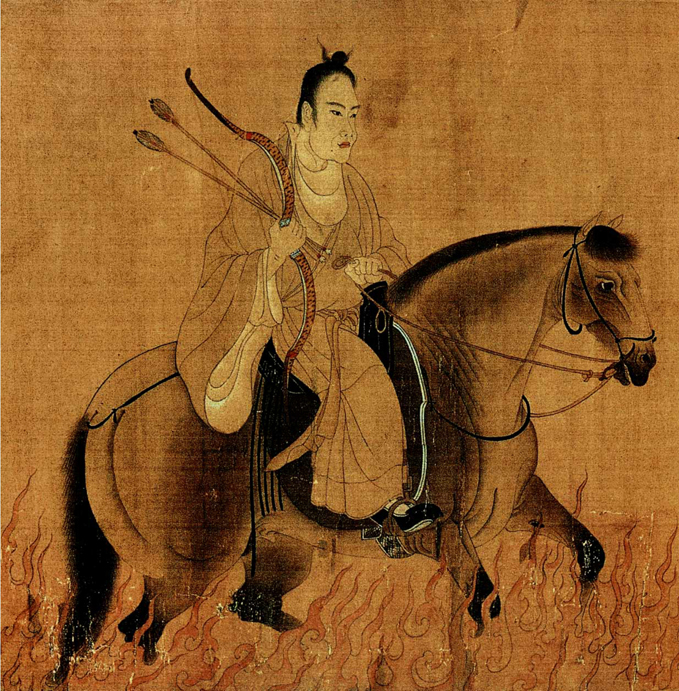 Picture of Deities of Five Planets and Twenty-eight Constellations (partial)
Picture of Deities of Five Planets and Twenty-eight Constellations (partial)
Liang Lingzan Tang Dynasty (618-907) Color on silk 27.5489.7cm Liang Lingzan, whose dates are unknown, was a famous Tang Dynasty painter as well as an inventor of astronomical apparatus.  Picture of Deities of Five Planets and Twenty-eight Constellations (partial)
Picture of Deities of Five Planets and Twenty-eight Constellations (partial)
Liang Lingzan Tang Dynasty (618-907) Color on silk 27.5489.7cm Liang Lingzan, whose dates are unknown, was a famous Tang Dynasty painter as well as an inventor of astronomical apparatus.
Ancient Chinese astronomers thought there were five planets (metal, wood, water, fire, and earth) in the universe, and they divided all the visible stars in the sky into twenty-eight constellations. Both the planets and the constellations were typically painted in human, animal or bird shape. Liang's original drawing comprises two scrolls; however, with one scroll missing, now only the other one resides in the collection of the Osaka City Art Museum of Japan. This section portrays a constellation deity riding a magnificent steed with burning hooves, full of a sense of mystery and wonder. 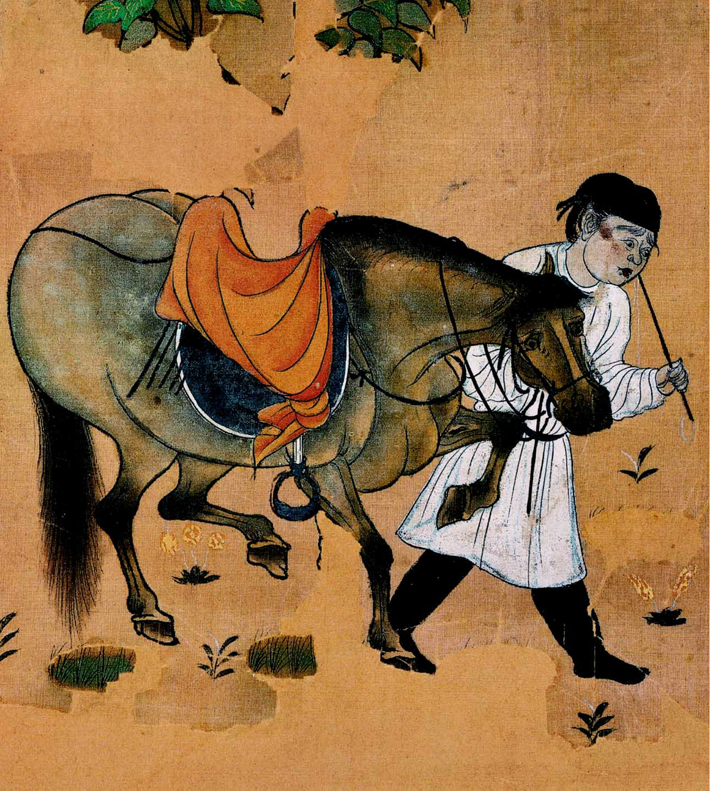 Picture of a Groom (partial)
Picture of a Groom (partial)
Painter unknown Tang Dynasty (618-907) Color on silk 21.5-2753.7-56.5cm Unearthed from Tomb No. 188 in Astana of Turpan, Xinjiang Uygur Autonomous Region, this picture drawn on a screen has a strong flavor of the Western Regions (a Han Dynasty term referring to what's now Xinjiang and parts of Central Asia).
The horse, figure and plants have all been delineated in succinct lines and a simple, unsophisticated style. 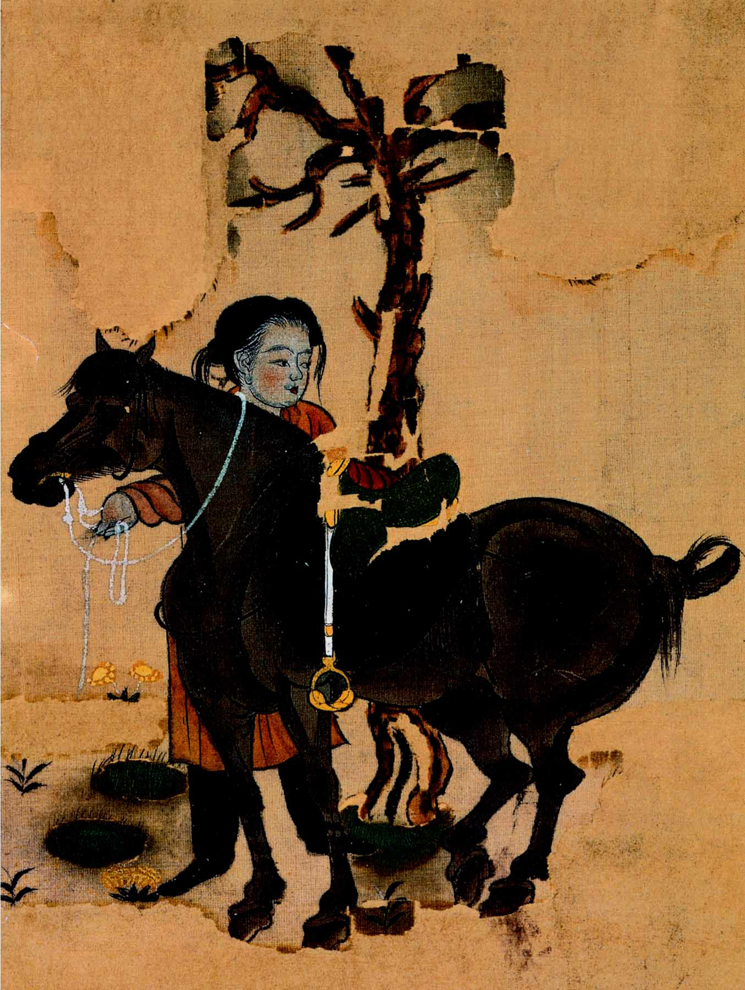 Picture of a Groom (partial)
Picture of a Groom (partial)
Painter unknown Tang Dynasty (618-907) Color on silk 21.5-2753.7-56.5cm A total of eight painted screens have been unearthed from the Astana ancient tomb. Like all the other pictures, this one is relatively immature in terms of overall composition and detail description. 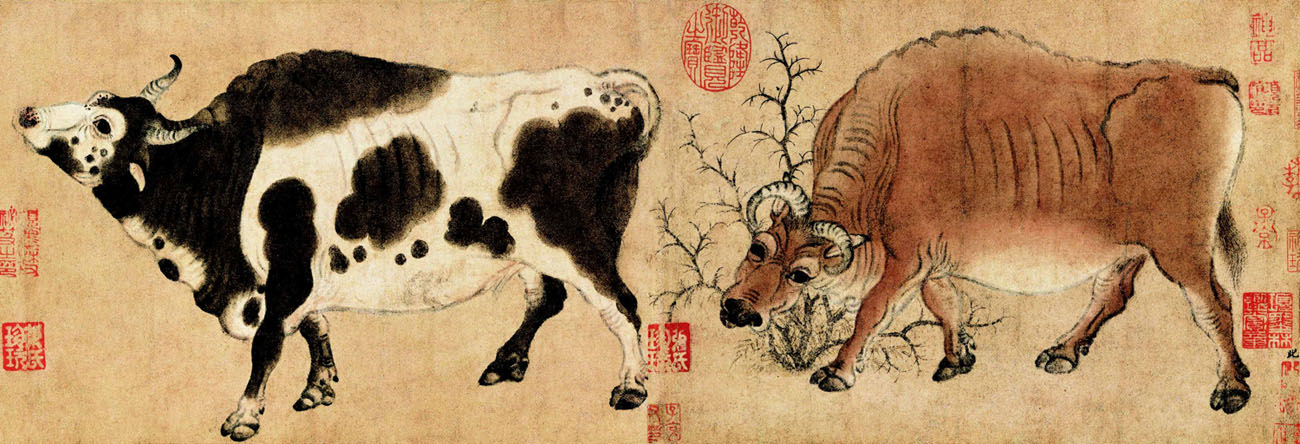 Picture of Five Oxen (partial)
Picture of Five Oxen (partial)
Han Huang Tang Dynasty (618-907) Color on paper 20.8139.8cm Han Huang (723-787) from Chang'an (today's Xi'an in Shaanxi Province), whose courtesy name was Taichong, was a master-hand in painting cattle. This long scroll portrays five oxen in varying shapes and postures.  Picture of Magnificent Steed
Picture of Magnificent Steed
Painter unknown Five Dynasties (907-960) Color on silk 27.5122cm This hand scroll depicts Zhi Dun, an Eastern Jin Dynasty (317-420) monk who had a great love for horses, watching a boy galloping a magnificent steed across the water.  Picture of Magnificent Steed
Picture of Magnificent Steed
Painter unknown Five Dynasties (907-960) Color on silk 27.5122cm This hand scroll depicts Zhi Dun, an Eastern Jin Dynasty (317-420) monk who had a great love for horses, watching a boy galloping a magnificent steed across the water.
A leisurely and carefree mood permeates through the drawing painted in rich but not loud colors. Before the Ming (1368-1644) and Qing (1644-1911) dynasties it was usually attributed to Han Gan. 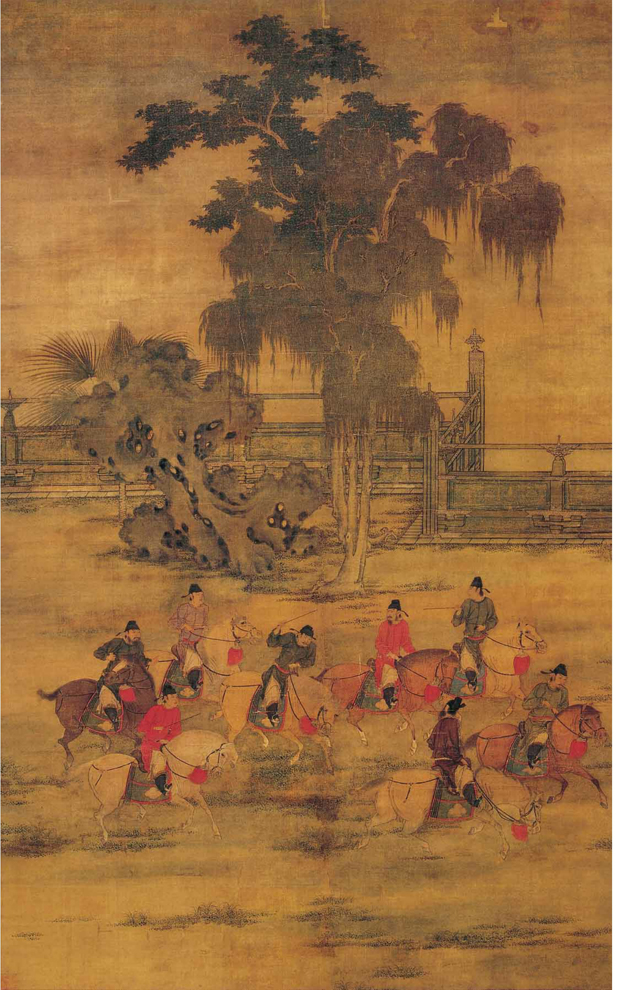

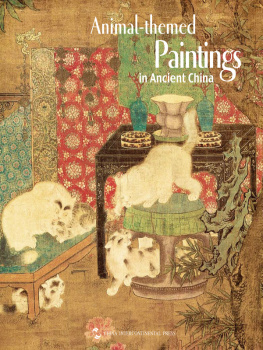
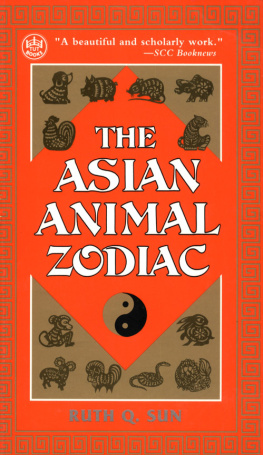
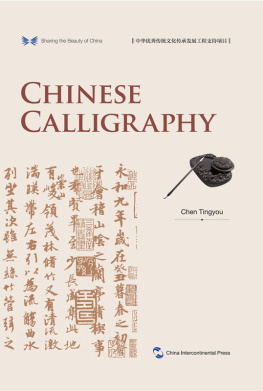

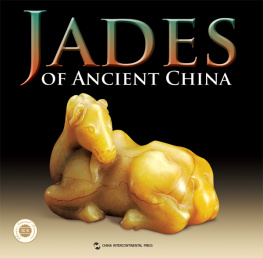
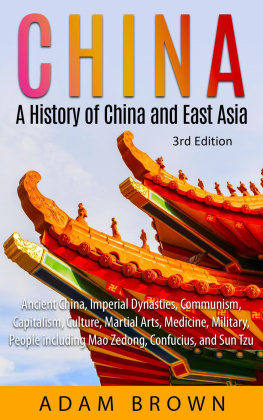
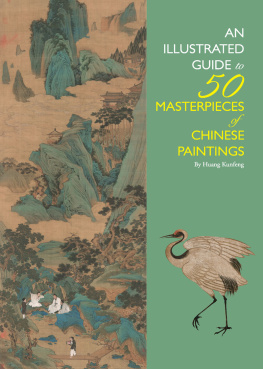
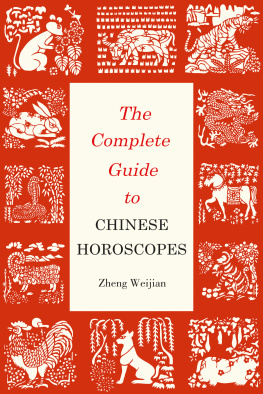
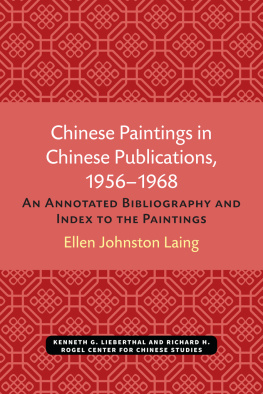

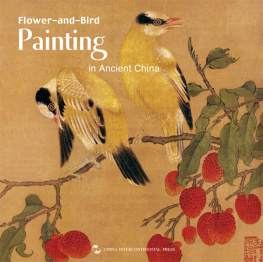



 Preface The history of animal-themed paintings in China can be traced back to the Neolithic Age around 6,000 or 7,000 years ago when our ancestors used the imagery of fish, bird and frog, which were closely related to their daily life, as decorative patterns on earthenware. In the periods of Shang (c. 1600-1100 BC) and Zhou (c. 1100-256 BC), the sacred images of dragon and phoenix were embroidered on silk fabrics, while taotie (a mythical ferocious animal), buffalo and sheep were engraved on bronze wares produced in batches. The stone or brick tombs of the Qin (221-206 BC) and Han (206 BC-AD 220) dynasties were typically decorated with relief sculptures of domestic animals and battle steeds in particular. During the Wei-Jin period (220-420) and the Northern and Southern dynasties (386-589), animals like horse, deer, tiger and so on were also commonly depicted images in the large frescoes in tomb chambers or Buddhist grottoes.
Preface The history of animal-themed paintings in China can be traced back to the Neolithic Age around 6,000 or 7,000 years ago when our ancestors used the imagery of fish, bird and frog, which were closely related to their daily life, as decorative patterns on earthenware. In the periods of Shang (c. 1600-1100 BC) and Zhou (c. 1100-256 BC), the sacred images of dragon and phoenix were embroidered on silk fabrics, while taotie (a mythical ferocious animal), buffalo and sheep were engraved on bronze wares produced in batches. The stone or brick tombs of the Qin (221-206 BC) and Han (206 BC-AD 220) dynasties were typically decorated with relief sculptures of domestic animals and battle steeds in particular. During the Wei-Jin period (220-420) and the Northern and Southern dynasties (386-589), animals like horse, deer, tiger and so on were also commonly depicted images in the large frescoes in tomb chambers or Buddhist grottoes.  Picture of Pasturing Horses
Picture of Pasturing Horses Picture of Deities of Five Planets and Twenty-eight Constellations (partial)
Picture of Deities of Five Planets and Twenty-eight Constellations (partial) Picture of a Groom (partial)
Picture of a Groom (partial) Picture of a Groom (partial)
Picture of a Groom (partial) Picture of Five Oxen (partial)
Picture of Five Oxen (partial) Picture of Magnificent Steed
Picture of Magnificent Steed